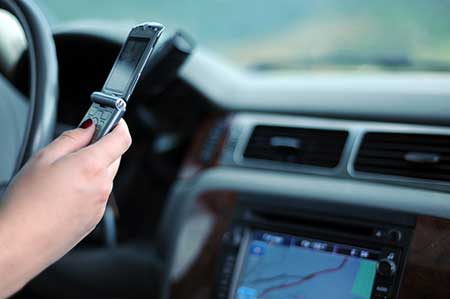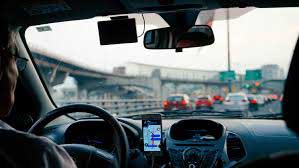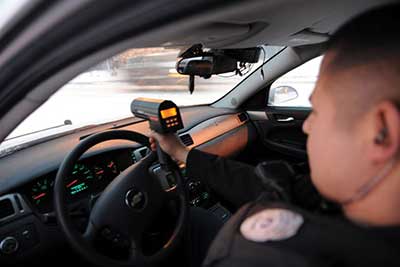Safe driving is an important and interesting topic for discussion. A good driver is the one who knows and respects the traffic rules, but also how to act to prevent any risky situation, such as an accident.
In general, the driving experience puts its mark in these cases, which can occur especially at night when visibility is low and fatigue is installed. However, it would be good for all drivers to know what preventive driving is and how to drive properly.
Preventive driving summarizes the actions of a driver in anticipation and avoidance of various traffic situations based on which accidents can occur. This means that a traffic participant must be able to anticipate the wrong actions of the drivers around him and know how to adapt to the weather, road and visibility conditions, but also the traffic intensity.
Contents
What is safe driving?
Essentially, driving safely means avoiding any type of danger encountered on the road at any time, regardless of season, time of day or type of road. Specifically, driving safely means understanding and preventing the actions of other participants in front, back or counter traffic (cars and motorcycles) and pedestrians.
I do not intend to make a top, a hierarchy of the most important rules of preventive driving. I do not propose to “give lessons” to anyone and I emphasize this by knowing the hypersensitivity of popular pride when it comes to driving a car. I’m just going to put together some ideas that I think have a good potential to calm a lot of accidents and maybe save a few lives.
The main rules of safety driving
- Good theoretical and practical training (the driver should be aware of the modifications of the road legislation, to check, from time to time, the road legislation or the modifications added);
- Vigilance, manifested by focusing attention on the road, on the way the traffic is being carried out and on the functioning of its own car(to notify in a timely way the road signs, the change of weather conditions and the intentions of the traffic partners);
- Prediction, represented by the ability of the driver to anticipate the risky situations in traffic early and to find solutions to avoid the occurrence or involvement in road events;
- The judgment is the psychic process of thinking and choosing a solution with the best result from a conflict situation that appeared in traffic at one point. It must be prompt (immediate), fast and selective (to choose the best solution in the shortest time);
- The skill, which translates into the driver’s ability to correctly and quickly execute the driving maneuvers of the vehicle.
Besides these main rules, we must also take into account other aspects, such as:
Attitude and common sense.

Traffic courtesy is a factor that can help us to reduce road accidents. When we see that someone is wrong, if we can help him get out of the mess it would be good to do it. Horn hoking, threats and obscene signs will do no good to anyone.
There are many who panic and react badly to such a stress factor. On the other hand, the person who made the mistake should understand that he embarrassed others, that he escaped the accident by their goodwill and therefore should not consider that maneuver was successful and repeat it again.
There is much to be said on this topic. To help those who want to overtake us to do it in the shortest time possible, let those who have committed themselves in a risky overtaking to return to their lane. We can do this without considering that our pride was hurt, but the one involved in this situation should erase his superior smile and reevaluate the situation.
Let’s apply the zipper rule in crowded traffic, not to worry about the little space that a prudent driver left between him and the car in front, forcing him to brake and make room for us.
Let us signal the intention to change the lane because even of those who use the signalers there are many who do it at the same time with the steering wheel or even after. It’s as if you didn’t signal at all.
Let us not just drive on the lane from the road axis and then heckle those who overtake us on the right side, no longer use the headlights and fog lights when outside the sky is clear, no longer driving by treading the separation mark of the lanes, to keep a reasonable distance from the cyclists when we exceed them.
Let’s talk a little more in detail about the main rules of safety driving
Attention and traffic anticipation.

Driving a vehicle requires a lot of attention on the road you are following, but to drive safely, it is also necessary to anticipate the dynamics of traffic, which involves more than just attention. We can prevent many dangerous situations if we are careful and understand what the intentions of other drivers are.
For example, if the third car in front of us brakes, it makes no sense to accelerate. Or if a driver brakes when he is approaching an intersection, it makes no sense to engage in an overtaking because he might turn left and forget to signal the intention or saw a child crossing the street without being assured.
We are in the countryside where we can still expect a surprise after each turn and in each village we pass. Also here we can think that it does not make sense to accelerate very strongly when climbing a hill. After the ridge, it can be an object that we cannot avoid or we will hardly avoid knowing that immediately after the ridge the adhesion of the tires to the asphalt will be reduced, without taking into account the delayed reaction caused by the element of surprise.
Overtaking at night is more dangerous because cars coming from the opposite direction are closer than they are in reality. After a few moments, we realize the reality and proceed with the maneuver when it is already late.
After the accident happened, for the victims it does not matter who was wrong and who was right.
Speed and road conditions.
What does it mean “did not adapt the speed to road conditions” or “keeping the distance to the limit of avoiding any danger“?
From a defensive driving point of view, it is very simple to run with the speed that will allow you to brake and stop safely in the distance you see. For example, if you drive in foggy conditions and see the only 50m of the road ahead, you should run at a speed that allows you to stop the car at any time at a maximum of 50m.
Braking downhill must be done earlier because the gravity must be defeated and the wheels no longer have maximum grip because they do not press on the ground as well as on the horizontal plane.
At a left turn, we should reduce the speed more than at the right turn, if we take into account the constructive slope of the road made for water drainage.
In cold weather, we should reduce the speed when crossing a bridge. It is possible to be very icy even if the road is dry. The land is warmer and the pole can be melted, but on the bridge, there is no one to emit this heat and the pole remains.
As a stimulus to drive safely it may be useful to know that at night, although the density of traffic is low, the number of accidents is greater than driving at day. Notice to those who plan their trips at night because there is no traffic and consider that they can arrive faster.
When descending a slope is it good to use the engine brake or let the car run with the gearshift in the neutral position? We will have a better safety of the car’s handling since the adhesion of the tires to the asphalt increases when using the engine brake compared to the free-running, the fuel consumption decreases in the engine brake compared to neutral position of the gearshift, the wear of the braking elements decreases at the engine brake compared to free-running and reducing the speed with the foot brake.
Regarding road conditions, we should also talk about roads, but I can only say that bad roads should be an added incentive to mobilize us to develop our driver skills to increase our chances of a successful journey.
Knowing the law.

In any game, if you want to win you must know the rules. Driving a car is all the more important as you have only one life available and after losing it you can no longer reload the game and take it all over again.
I have met many drivers, even professionals, who at the simple exercise of solving a questionnaire of legislation do not succeed more than a few points.
Reviewing the road legislation after a few years of practice is interesting because it gives you another perception and a better and easier understanding given just the accumulated experience.
